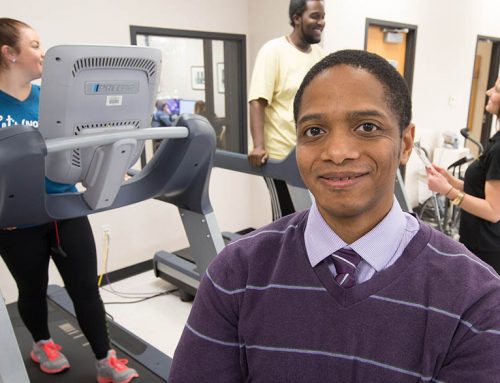
WEDNESDAY, Oct. 18, 2017 (HealthDay News) — When it comes to exercise, can you get too much of a good thing?
Possibly, suggests a new study that found white men who exercise more than seven hours a week have an 86 percent higher risk of developing plaque build-up in their arteries. No such elevated risk was seen among either black men or women.
Plaque build-up is a critical warning sign for possible future heart disease risk.
“We were surprised by the finding, mainly because we essentially think of exercise as medicine. And we’ve never thought of exercise as perhaps having an upper limit in terms of its cardiovascular benefit,” said study author Deepika Laddu.
She’s an assistant professor of physical therapy at the College of Applied Health Sciences at the University of Illinois at Chicago.
But Laddu doesn’t want any men to hang up their running shoes just yet, because there are many questions that remain to be answered.
“What we saw is only an association, and we cannot say that high physical activity actually causes plaque build-up in white men,” she noted.
“And we certainly do not mean to say that exercise is bad for you. In fact, it could perhaps be that white men already face a higher than average risk for plaque build-up than other men, and that exercise actually prevents this plaque from rupturing, which is when things get bad. We just don’t know,” Laddu explained. “Much more research will be needed to understand what is really going on.”
At least one other expert agreed this doesn’t mean people should stop exercising.
Dr. Gregg Fonarow, a professor of cardiology at the University of California, Los Angeles, said the findings do not instantly wash away the “balance of data [that] suggest that higher levels of leisure time and total physical activity are associated with lower risk cardiovascular events.”
“However, it should be recognized that exercise alone cannot overcome other cardiovascular risk factors,” he added. “And it is vital to maintain health levels of blood pressure, cholesterol and body weight, as well as not smoke, even if one is engaging in regular rigorous physical activity.”
To explore how exercise might impact heart health over time, the investigators recruited nearly 3,200 white and black men and women. All enrolled when they were between the ages of 18 and 30, and all resided in one of four cities: Birmingham, Chicago, Minneapolis or Oakland.
The researchers followed the study volunteers from 1985 to 2011. During that time, participants self-reported their physical activity routines and showed up for at least three follow-up exams, which included CT scans to measure plaque build-up.
Current U.S. physical activity guidelines recommend 150 minutes of moderate activity or 75 minutes of vigorous activity weekly. Participants were sorted into three groups, depending on average exercise levels. One group exercised below the guidelines level. Another group met the guidelines, and a final group exercised three times more than the guideline level.
“We had 25 years of exercise patterns that we could look at, in individuals who started out as being young adults up through middle-age,” Laddu said.
In the end, the study team found that overall — when pooling race and gender — those who were among the most frequent exercisers were 27 percent more likely to develop plaque build-up by the time they had reached middle age.
But after breaking the numbers down further, the authors determined that only high-exercising white men faced a greater risk for developing plaque build-up then their low-exercising peers.
“But again, we can’t say physical activity is causing plaque build-up,” Laddu reiterated.
She also acknowledged the study had limitations. For one, she noted that very few of the high exercisers were black, making it difficult to draw definitive conclusions.
“And we really have no idea yet what may be biologically at play that might lead to differences in the way exercise affects [plaque build-up] in some people and not others,” Laddu added.
“But what I can say is that maybe this study indicates that doctors should not assume that their patients are healthy simply because they check off the exercise box,” she said. “Maybe there are other things that they need to look at when considering a patient’s overall medical profile.”
The study was published Oct. 16 in the Mayo Clinic Proceedings.
SOURCES: Deepika Laddu, Ph.D., assistant professor, physical therapy, College of Applied Health Sciences, University of Illinois at Chicago; Gregg Fonarow, M.D, professor, cardiology, University of California, Los Angeles; October 16, 2017, Mayo Clinic Proceedings
News stories are written and provided by HealthDay and do not reflect federal policy, the views of MedlinePlus, the National Library of Medicine, the National Institutes of Health, or the U.S. Department of Health and Human Services.
[the_ad id=”28610″]




Leave a Reply